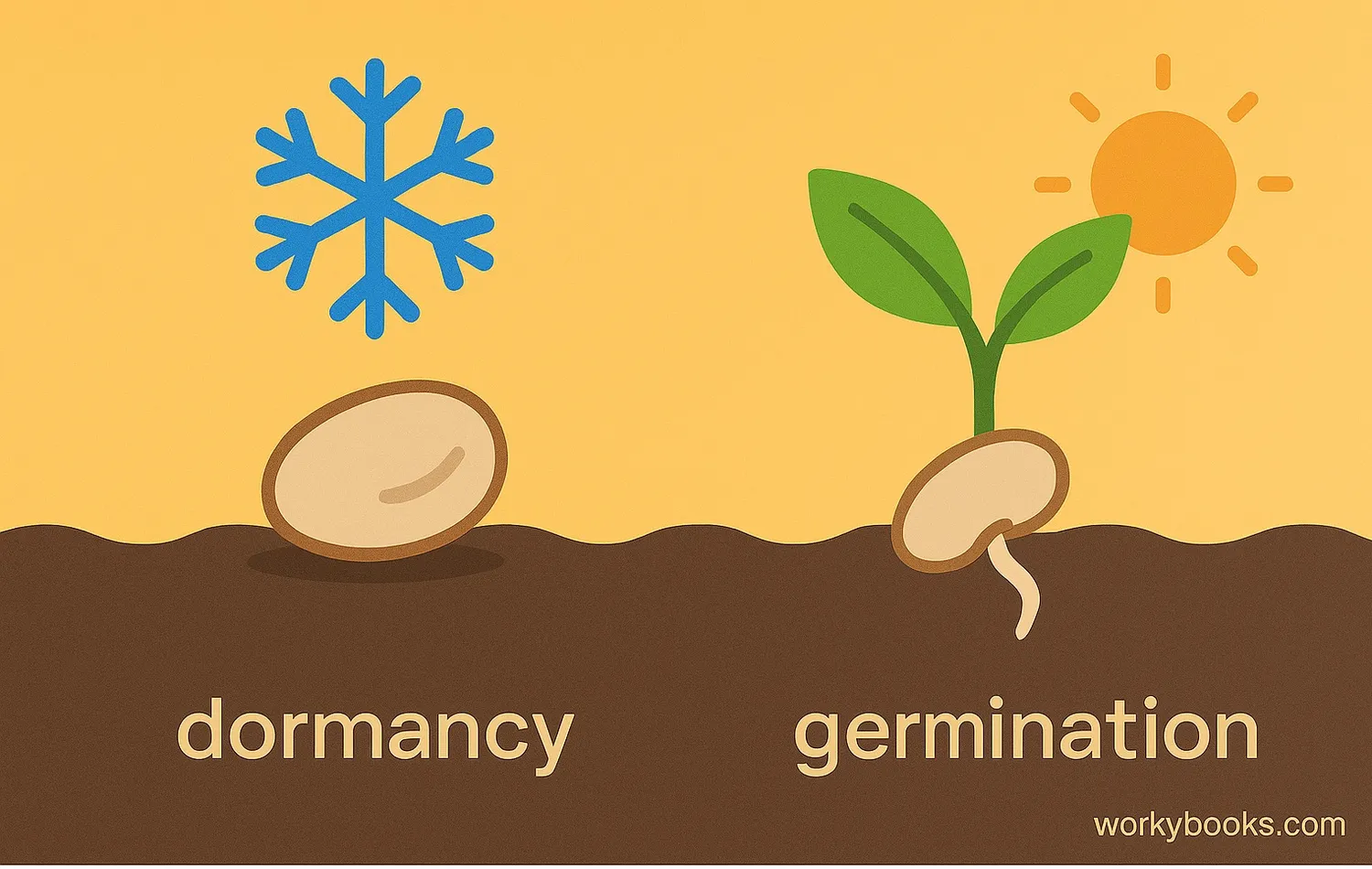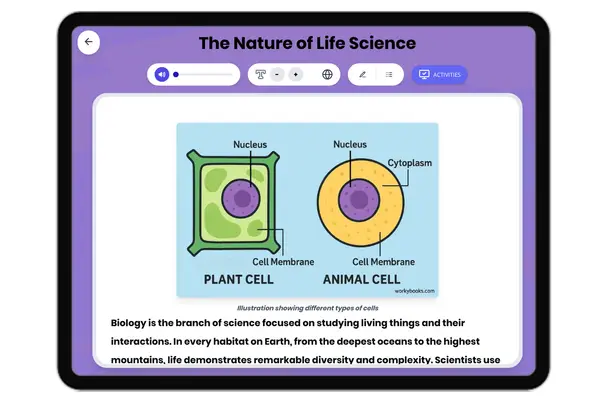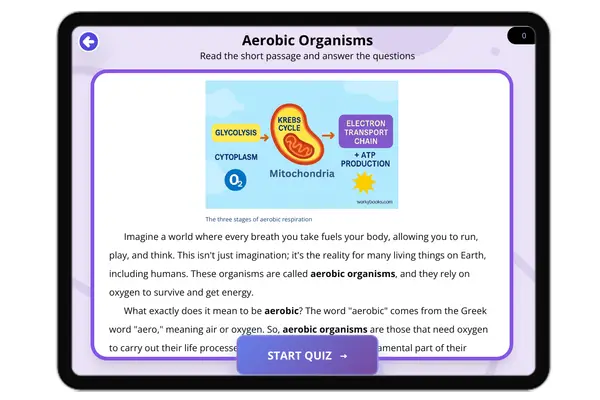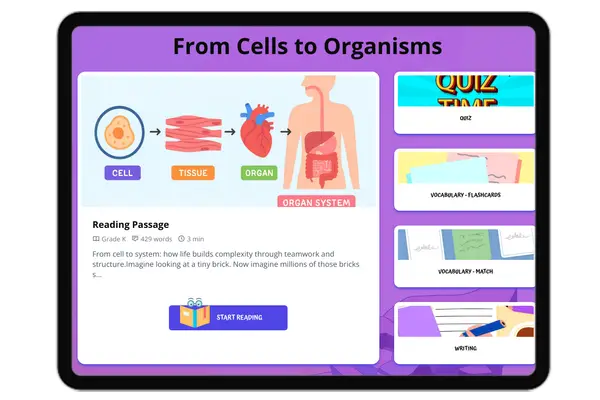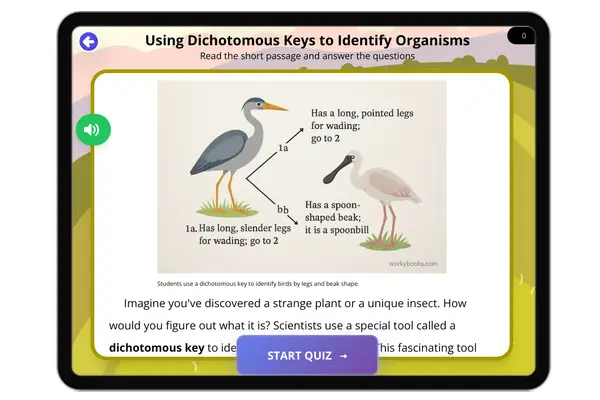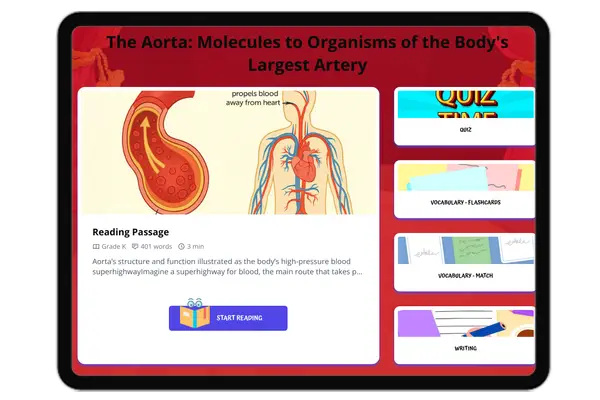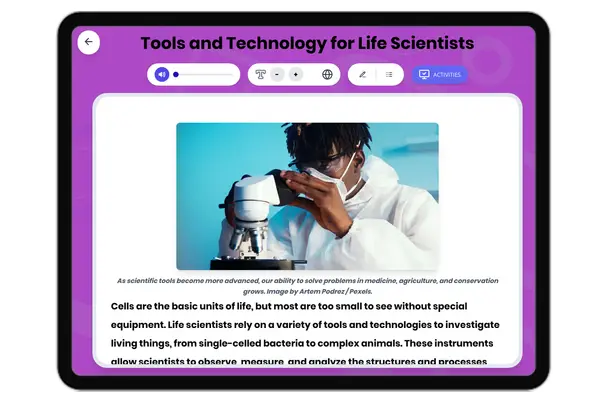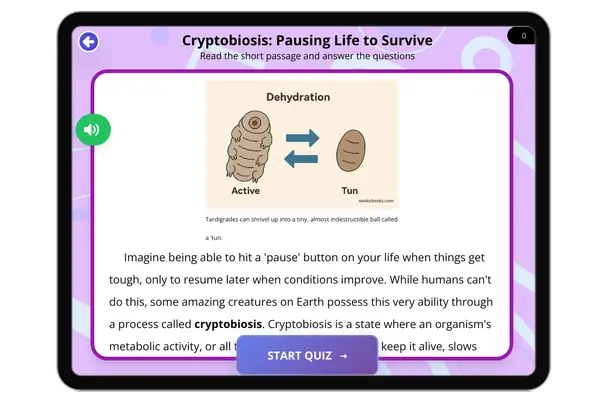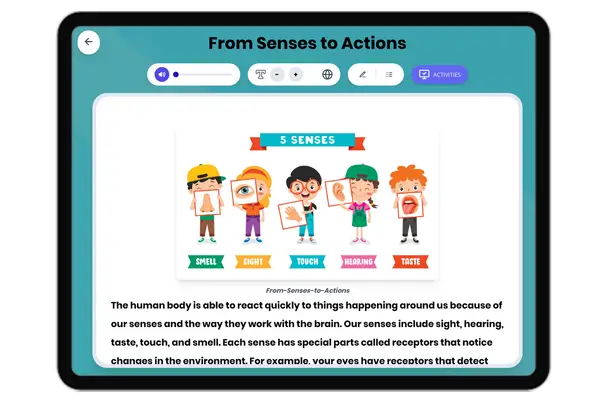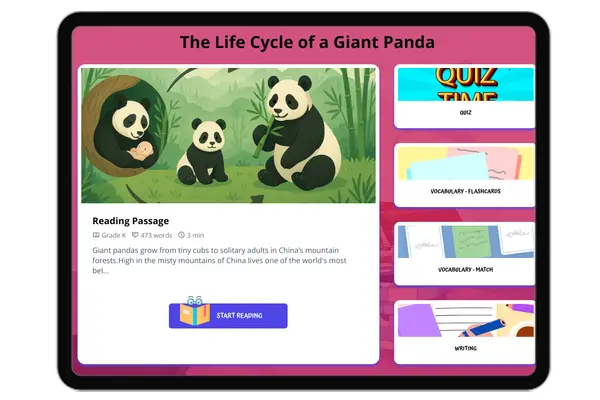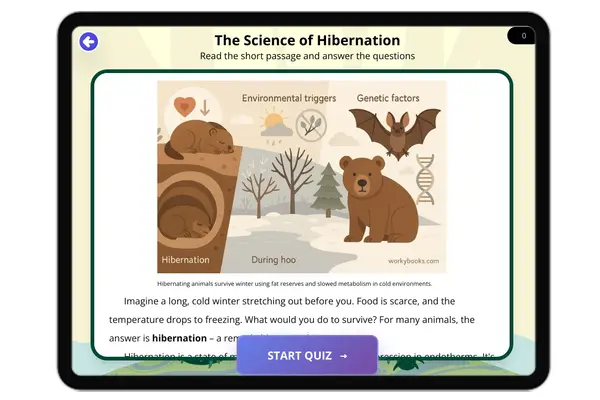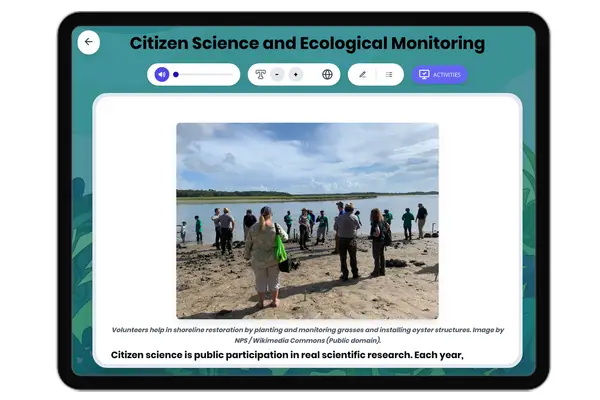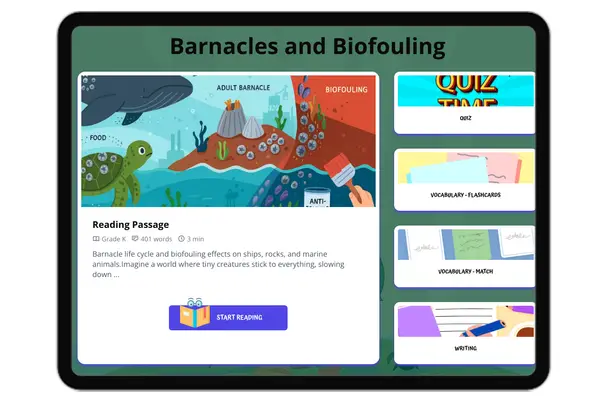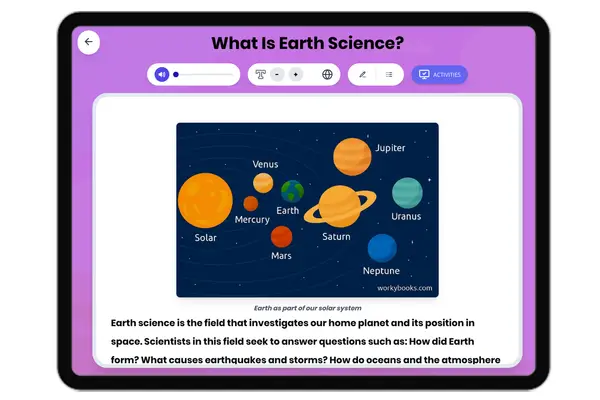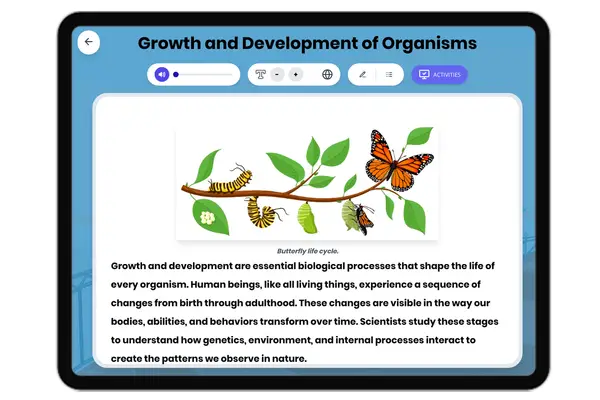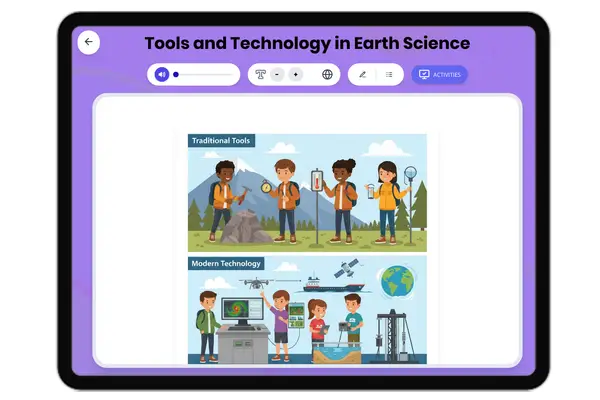Seed Dormancy vs. Germination — Reading Comprehension
Premium Resource
Grades
- 6
PRINT+DIGITAL RESOURCE
This learning resource is available in interactive and printable formats. The interactive worksheet can be played online and assigned to students. The Printable PDF version can be downloaded and printed for completion by hand.
About This Reader
This educational passage, 'Seed Dormancy vs. Germination,' is designed for Grade 6 students to understand the fascinating processes by which plants develop. It delves into the concepts of seed dormancy, a crucial survival strategy where seeds pause their growth until conditions are favorable, and germination, the exciting moment when a seed sprouts into a new plant. Aligned with NGSS standard LS1.B (Growth and Development of Organisms), the passage explains how factors like water, warmth, and light influence these processes. Key terms are defined, making complex biological ideas accessible. This engaging content, also audio integrated, helps students grasp essential concepts related to plant life cycles and environmental adaptations.
Perfect For:
👩🏫 Teachers
- • Reading comprehension practice
- • Auto-graded assessments
- • Literacy skill development
👨👩👧👦 Parents
- • Reading practice at home
- • Comprehension improvement
- • Educational reading time
🏠 Homeschoolers
- • Reading curriculum support
- • Independent reading practice
- • Progress monitoring
Reading Features:
📖
Reading Passage
Engaging fiction or nonfiction text
❓
Comprehension Quiz
Auto-graded questions
📊
Instant Feedback
Immediate results and scoring
📄
Printable Version
Download for offline reading
🔊
Read Aloud
Voice-over with word highlighting



